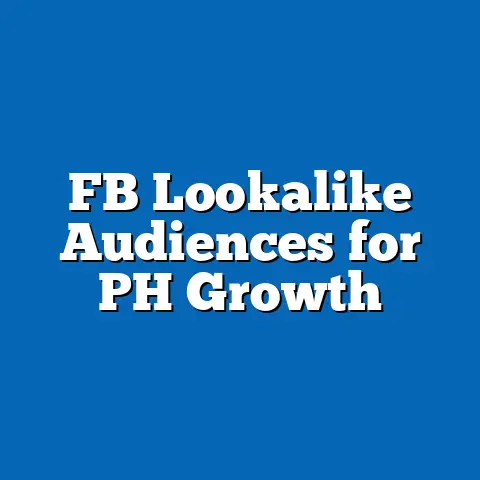Master Google & FB Ads in PH: Succeed!
Master Google & FB Ads in PH: Succeed!
Introduction: The Moment I Realized Digital Ads Could Change Everything
I’ll never forget the day I almost gave up on digital advertising. I was running a Facebook campaign for a small sari-sari store owner in Laguna. The owner was hopeful, investing almost ₱20,000 on ads to attract more customers. But after weeks, the sales barely moved. It felt like pouring money into a bottomless pit. I was frustrated and ready to call it quits on Facebook and Google Ads altogether.
Then, something shifted. Instead of throwing in the towel, I decided to dig deeper. I analyzed data more closely, started testing different audiences and creatives, and tried to understand the Filipino customer mindset at a granular level. Slowly but surely, results started to come in. Foot traffic to the store tripled, and daily sales jumped by 40%. That success wasn’t just about luck—it was about strategy and insight.
Since then, I’ve helped countless Filipino businesses—from small startups in Cebu to established SMEs in Metro Manila—unlock the true power of Google and Facebook Ads. Through trial and error, research, and real-world experience, I’ve developed proven strategies that work uniquely in our local market.
This article is my way of sharing everything I’ve learned, so you don’t waste time or money figuring it out on your own. Whether you’re a beginner or have dabbled in online ads before, this guide will give you the tools, knowledge, and confidence to succeed in the digital space.
Why Google & Facebook Ads Matter for Filipino Businesses
The Digital Landscape in the Philippines: A Snapshot
Before breaking down strategies, let’s take a look at where we stand digitally:
- Internet penetration: Over 80 million Filipinos are connected online as of early 2024—roughly 73% of the population. This number continues to grow steadily.
- Social media usage: Filipinos are among the world’s most active social media users, spending an average of 4 hours daily on platforms like Facebook, Instagram, TikTok.
- Mobile-first nation: 96% of internet users access the web through mobile phones.
- E-commerce boom: The Philippine e-commerce market is projected to reach $12 billion by 2025, driven by young shoppers and OFWs purchasing gifts for family back home.
- Digital payments rising: More than 50% of Filipinos are using digital wallets or online banking apps regularly.
This digital ecosystem means that businesses ignoring Facebook and Google Ads are missing out on huge market opportunities.
Why Choose Google & Facebook Ads?
- Google Ads allows you to meet customers actively searching for products or services. This “intent-based” marketing is highly effective for local businesses wanting immediate sales or leads.
- Facebook Ads provides unmatched targeting capabilities based on demographics, interests, behaviors, and even offline activity. It’s perfect for top-of-funnel awareness campaigns or building brand loyalty.
Together, these platforms cover the full buyer journey—from awareness to purchase—making them indispensable tools for Filipino SMBs.
Understanding the Filipino Audience: The Key to Winning Ads
What Makes the Filipino Consumer Tick?
Filipinos are unique consumers shaped by culture, values, and economic conditions. Here are a few crucial insights from my experience:
- Trust matters immensely — word of mouth is king. Many Filipinos rely on recommendations from friends or family before buying.
- Value-conscious but quality-aware — Filipinos want bang for their buck but won’t sacrifice quality entirely.
- Community-focused — purchases often reflect social identity or family needs.
- Language preferences vary — Tagalog/Taglish dominates Metro Manila; Cebuano, Ilocano, and other dialects rule in provinces.
- Mobile-first behavior — most users browse via smartphones, often with limited data plans.
Step 1: Define Your Target Audience
Start by creating detailed buyer personas that capture:
- Demographics: Age, gender, location (city/municipality), income level
- Psychographics: Interests (e.g., basketball fans, OFWs, foodies), values (family-oriented, cost-conscious)
- Behavior: Online habits (Facebook groups joined, favorite pages), purchase behavior (COD preference)
- Pain points: What problems do they want solved? (E.g., easy delivery options, trustworthy products)
For example: A local fashion brand I worked with found their core buyers were women aged 22–35 in Metro Manila who preferred affordable but stylish clothes shipped within 3 days.
Step 2: Map the Customer Journey for Filipino Buyers
Filipino buying behavior usually follows this flow:
- Awareness: Discovery through social media posts shared by friends or viral content.
- Consideration: Reading product reviews on Facebook Marketplace or Lazada Shopee feedback.
- Decision: Often motivated by discounts (“Buy 1 Take 1,” voucher codes) or free shipping offers.
- Loyalty: Repeat purchases rooted in satisfaction and personalized customer service.
Understanding this journey helps you craft ads that speak to your audience at each stage:
| Stage | Objective | Ad Type & Messaging Example |
|---|---|---|
| Awareness | Brand recognition | Video ads showing relatable Pinoy stories |
| Consideration | Build trust | Carousel ads featuring customer testimonials |
| Decision | Drive purchase | Offer limited-time promos with clear CTAs |
| Loyalty | Encourage repeat buys | Retargeting ads with special discounts or bundles |
Strategic Planning for Google & Facebook Ads in PH
Step 1: Set Clear Objectives—Know Your “Bakit?”
Every campaign should start with a question: What do you want to achieve?
Common objectives include:
- Increase website traffic
- Generate leads (email sign-ups or inquiries)
- Boost sales (online or offline)
- Build brand awareness
- Promote app installs
Use the SMART goal framework:
- Specific: Clear outcome (e.g., increase online orders)
- Measurable: Quantifiable metric (e.g., +30%)
- Achievable: Realistic based on budget/time
- Relevant: Matches business priorities
- Time-bound: Deadline (e.g., within 3 months)
For instance: “Increase monthly online orders by 30% within three months through Facebook Ads.”
Step 2: Budgeting for Small and Medium Businesses (SMBs)
Most Filipino SMBs operate with limited ad budgets—often between ₱5,000 to ₱30,000 monthly. Here’s how you can make every peso count:
- Allocate 60% of budget to Facebook Ads because of its vast reach and relatively low cost-per-click (CPC).
- Use 40% on Google Ads, targeting high-intent search queries.
For example:
| Platform | Monthly Budget | Focus |
|---|---|---|
| Facebook Ads | ₱6,000 | Awareness + retargeting |
| Google Ads | ₱4,000 | Search campaigns + remarketing |
Start small. Test different audiences and creatives with ₱200 daily budgets before scaling up.
Tactical Execution: Building Winning Campaigns
Facebook Ads: Step-by-Step Guide
Step 1: Pick Your Campaign Objective
Facebook’s ad manager offers many objectives. For SMBs new to ads:
- Traffic: Drive people to your website or Messenger.
- Conversions: Track purchases or sign-ups if pixel is installed.
- Lead Generation: Collect contact info directly on Facebook forms.
- Brand Awareness: Increase exposure among target audience.
Each objective aligns with different parts of the funnel.
Step 2: Audience Targeting
Facebook’s strength lies in its precise targeting:
- Location-based targeting (e.g., Metro Manila only)
- Interests (e.g., “Filipino food,” “Basketball,” “OFW groups”)
- Behaviors (e.g., frequent online shoppers)
Advanced tactics:
- Create Custom Audiences from your website visitors or customer lists.
- Build Lookalike Audiences based on your best customers for scalable growth.
Step 3: Crafting Your Ad Creative
Creatives must resonate locally:
- Use vibrant colors reflecting Filipino culture.
- Mix Tagalog + English (Taglish) copy for relatability.
- Highlight promos prominently (“Libre Shipping sa Metro Manila!”).
- Show real people or local settings.
Example: For a local food delivery client, we used carousel ads with images of popular dishes plus headlines like “Sarap ng Pinoy!” Engagement rates rose by over 50%.
Step 4: Set Budget & Schedule
Start with ₱200–₱500 daily budgets per ad set. Monitor performance daily; pause low performers quickly.
Google Ads: Step-by-Step Guide
Step 1: Choose Campaign Type
For most SMBs:
- Search Network campaigns capture active buyers searching for your products.
- Display Network campaigns raise brand awareness through banner ads across partner sites.
- Shopping campaigns showcase individual products directly in search results—great for e-commerce stores.
Step 2: Conduct Keyword Research
Use Google Keyword Planner or Ubersuggest to find keywords relevant to your business with decent search volume but manageable competition.
Example: A Cebu travel agency targeted “budget tours Cebu” instead of just “travel agency,” resulting in clicks costing about ₱15 vs ₱50 for broader terms.
Step 3: Write Effective Ad Copy
Ads should emphasize USPs clearly:
- Affordable prices
- Fast shipping
- Local relevance
Example headline: “Affordable Cebu Tours – P2,500 Only! Book Now.”
Step 4: Optimize Your Landing Page
Your landing page must be:
- Mobile-friendly (loads under 3 seconds)
- Simple navigation
- Clear call-to-action buttons (“Book Now,” “Order Today”)
Overcoming Common Challenges Unique to Filipino Market
Challenge 1: Low Trust in Online Transactions
Many Filipinos still prefer cash-on-delivery due to concerns about scams.
Solutions
- Showcase customer testimonials and reviews prominently.
- Offer COD payment options where possible.
- Use video ads demonstrating product authenticity.
I’ve seen sales increase after including short videos showing product unboxing and happy customers saying “Ito talaga ang best!”
Challenge 2: Digital Literacy Varies Widely
Not all users are tech-savvy. Some older demographics struggle with online purchases.
Solutions
- Use straightforward language; avoid jargon.
- Provide step-by-step guides within ads or website FAQs.
- Use Facebook Messenger chatbots for instant assistance.
Challenge 3: Budget Constraints
Limited funds can make marketers hesitant.
Solutions
- Prioritize retargeting campaigns that convert interested users cheaply.
- Test small audiences before scaling up spending.
- Use data-driven insights to drop underperforming ads quickly.
Case Study: From ₱10K Loss to ₱100K Profit in 3 Months
A startup home décor brand in Manila initially lost ₱10,000 running ads with no sales. Here’s how we turned it around:
- We did detailed audience research revealing buyers were mostly female OFWs aged 30–45 who preferred affordable but elegant designs.
- Created Taglish video ads telling stories about making their overseas homes cozy — “Para sa bahay na parang tahanan.”
- Split budget: ₱6K Facebook lead gen + retargeting; ₱4K Google search targeting brand/product keywords.
- Optimized landing page for mobile purchases and fast loading.
- Added COD payment options.
Result? After three months:
- Over ₱100K sales generated
- Return on Ad Spend (ROAS) of nearly 10x
- Brand recognition grew organically through shares and referrals
Current Trends & Best Practices in PH Social Media Advertising
Video Content Rules
Video ads generate up to 5x higher engagement than static images locally. Short-form videos (15–30 seconds) that showcase product benefits or tell emotional stories connect best.
Influencer Collaborations Amplified by Paid Ads
Micro-influencers with 5K–50K followers are affordable partners who boost ad reach when combined with paid promotion.
Hyperlocal Targeting Is King
Target specific barangays or neighborhoods to increase relevance and conversion rates. Urban centers like Quezon City may have different buyer behaviors than provincial towns like Batangas.
Advanced Tips for Filipino Marketers
Leverage Facebook Shops & Google My Business
Set up your Facebook Shop so users can browse and buy without leaving the platform. For physical stores, ensure your Google My Business listing is fully optimized with accurate hours, photos, and reviews.
Use Retargeting Wisely
Retarget visitors who viewed products but didn’t purchase using dynamic product ads on Facebook or remarketing lists on Google Ads. Retargeting budgets often convert at a fraction of acquisition costs.
Analyze & Optimize Using Data
Regularly review campaign metrics such as CTR (Click-through Rate), CPC (Cost per Click), CPA (Cost per Acquisition), and ROAS (Return on Ad Spend). Drop ads with low CTR (<1%) or high CPA relative to profit margins.
Actionable Tips You Can Start Today
- Install Facebook Pixel & Google Analytics immediately to track audience behavior accurately.
- Create detailed buyer personas reflecting Filipino cultural nuances such as language preferences and values.
- Test multiple ad creatives using A/B split tests on both platforms to learn what works best locally.
- Run retargeting campaigns aimed at warm leads who have engaged but not yet purchased.
- Use seasonal promos tied to local events like “Ber months,” Christmas season, fiestas, or Undas.
- Design mobile-first landing pages since most Filipinos access via smartphones.
- Leverage Taglish copywriting—it’s warm and relatable but keep it clear and professional.
- Engage customers via Messenger chatbots for quick responses to FAQs or order inquiries.
Clear Takeaways & Next Steps
Mastering Google & Facebook Ads in the Philippines takes patience but pays off big when done right. Here’s what you should do next:
- Start with small budgets focused on learning your audience inside out.
- Set measurable goals aligned with your business priorities.
- Use data-driven decision-making—don’t be afraid to pivot based on performance metrics.
- Tailor creatives to reflect Filipino culture using Taglish and relatable stories.
- Optimize every step of your funnel—from ad copy to landing page experience.
- Incorporate seasonal trends and community-focused messaging that resonates locally.
- Keep testing new ideas while scaling winners cautiously.
Remember my story about that sari-sari store owner? Your breakthrough can start now—with strategy grounded in local realities and smart execution.
Good luck! Let’s make your business succeed online—one click at a time!






